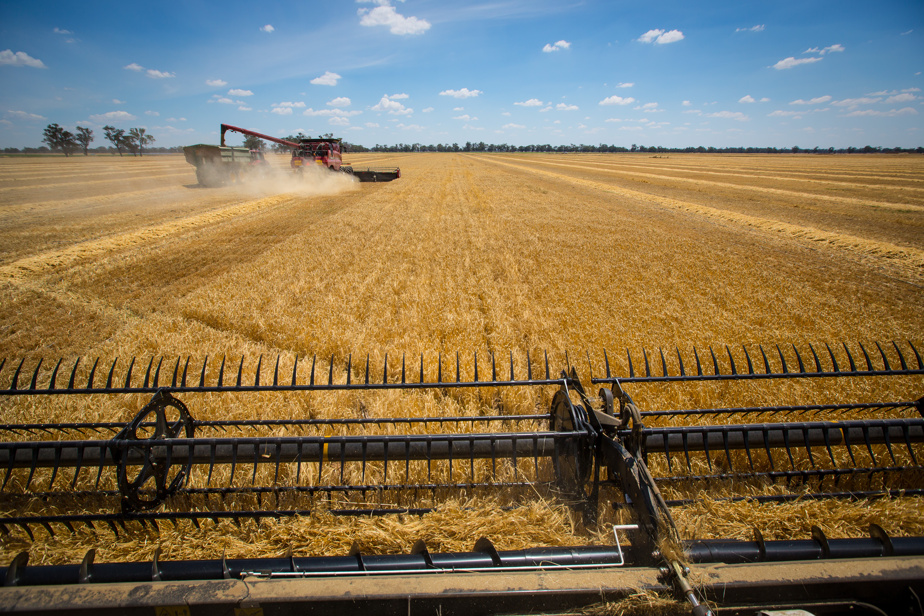(Paris) After the 2022 surge linked to the war in Ukraine, world food prices fell by 13.7% in 2023, with a marked decline for vegetable oils and cereals, the Organization of United Nations Food and Agriculture.
The price index calculated by the FAO, which tracks the variation in international prices of a basket of food products traded on markets, is down 15.4% in 2023 compared to the previous year for cereals, “reflecting well-supplied global markets.”
A page has been turned after the unprecedented surge in prices in 2022. The prices of cereals and oils then rose sharply, reflecting concerns about a collapse in production in the Ukrainian agricultural superpower – then the world’s leading exporter of sunflower oil and fourth for corn and wheat.
Prices of wheat, an essential cereal for bread, had soared, causing the UN to fear an increased food catastrophe in fragile states.
The maintenance of exports, even less, by Kyiv, the abundance of the Russian and Australian supply of wheat and the good Brazilian harvests of corn and soybeans have favored the decline in prices (-28% for wheat on the market European over one year).
But “the fact that the price of raw materials is falling does not necessarily imply a drop in the price of food products,” underlines economist Bruno Parmentier, consultant specializing in agricultural and food issues.
“The FAO index takes into account the price of basic raw materials: it is not what we eat directly, except for rice. “What we eat is mostly processed: it’s the corn eaten by pigs or the durum wheat in pasta,” he explains.
There is a gap between the fall in prices and its repercussion on inflation on the supermarket shelves, because there is always “strong resistance from manufacturers who want to maintain their margins” and also because of non-recurring production costs. linked to agricultural products: “The price of wheat only represents 4 to 8% of the price of the baguette, the main part being the cost of labor and charges (energy, water, rent)”, indicates he.
The general decline in prices, however, offered a respite to importing countries. But the FAO estimated in November that global spending on food imports should continue to increase in 2023, in particular due to transport costs and unfavorable exchange rate effects for fragile states.
For cereals, the 2023 decline is all the more notable given that the FAO rice price index increased by 21% over this period, largely due to concerns about the potential impact of the El Niño climate phenomenon. on global production and due to export restrictions imposed by India.
The biggest decline comes from vegetable oils, which fall 32.7% in 2023, compared to 2022. A decline that continues in December, “soybean oil in particular being affected by a slowdown in demand from the sector biodiesel as well as by the improvement of weather conditions in the main growing areas of Brazil”, specifies the FAO.
Sugar is the only production to escape the general annual decline with an increase of 26.7%. But it too finally began to decline: in December, the index was down 16.6% compared to November, reaching its “lowest level in nine months”.
The fall in sugar prices is “mainly due to the sustained pace of production in Brazil, as well as the reduction in the use of sugar cane for the production of ethanol in India,” underlines the UN organization.
The prices of dairy products did not escape the general decline (-23.6% in 2023), under the effect of sluggish import demand, but the FAO notes a rebound at the end of the year, with increase of 1.6% in December compared to November: an increase due to the increase in prices of butter, whole milk powder and cheese, particularly under the effect of the end-of-year holidays in Western Europe.
Meat is the product that has changed the least, with a price drop of 3.5% in 2023 compared to the previous year, in a context of moderate demand from the main importers and in particular a lower appetite from Chinese consumers .
